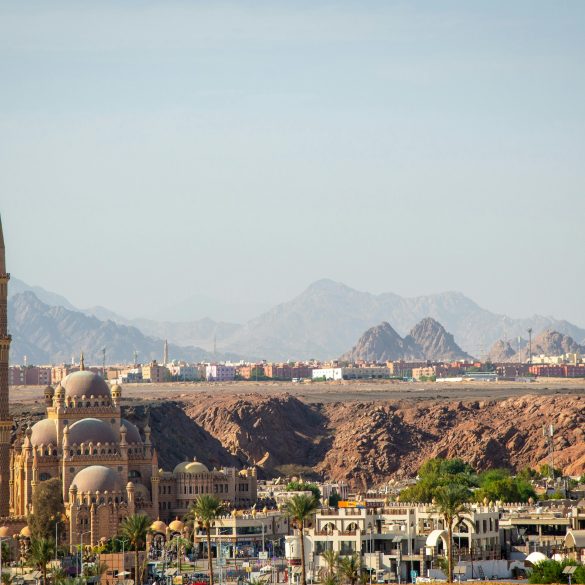Banking Without Borders: Egypt’s Fintech Landscape
Egypt’s fintech revolution isn’t just happening—it’s absolutely exploding, and honestly, I’ve been fascinated watching this transformation unfold over the past few years. What started as a necessity during the pandemic has evolved into something much more significant: a complete reimagining of how 100 million Egyptians interact with financial services1.
The numbers alone tell a compelling story, but the real magic lies in the details. Digital payment transactions in Egypt jumped by 240% between 2020 and 2023, reaching approximately $45 billion in total value2. However, what strikes me most isn’t just the growth—it’s the sophistication of the solutions emerging from Cairo’s tech hubs and Alexandria’s innovation centers.
Egypt Financial Inclusion Snapshot
As of 2023, Egypt’s financial inclusion rate reached 51%, up from just 33% in 2017. The Central Bank of Egypt’s aggressive digitization strategy aims to achieve 70% financial inclusion by 2025, with particular focus on rural communities and small business lending. Mobile wallet adoption has grown 400% since 2020, making Egypt one of Africa’s fastest-growing digital payment markets.
I’ll be completely honest—when I first started tracking Egypt’s fintech scene around 2019, I was skeptical about the pace of change. Traditional banking infrastructure seemed deeply entrenched, regulatory frameworks appeared restrictive, and consumer adoption felt slow. How wrong I was about the underlying momentum building beneath the surface.
What changed everything, in my observation, was the convergence of three critical factors: government commitment to digital transformation, a young, tech-savvy population hungry for financial services, and—perhaps most importantly—regulatory leadership that actually understood fintech innovation rather than fearing it.
The Central Bank of Egypt’s regulatory sandbox, launched in 2019, has become a model for emerging markets globally3. Unlike many developing economies where regulators play catch-up, Egypt’s approach has been proactive, collaborative, and surprisingly innovative. This regulatory foundation has created the perfect environment for both local startups and international players to experiment, scale, and thrive.
Regulatory Foundation and Central Bank Leadership
Egypt’s regulatory approach has genuinely impressed me—and that’s coming from someone who’s seen regulatory frameworks across dozens of emerging markets. The Central Bank of Egypt hasn’t just opened doors for fintech innovation; they’ve actively architected an ecosystem designed for sustainable growth.
The CBE’s regulatory sandbox currently hosts over 40 fintech companies, ranging from digital lending platforms to blockchain-based remittance services4. What’s particularly clever about their approach is the tiered licensing system, which allows companies to start small, prove their concepts, and gradually scale their operations as they demonstrate compliance and market fit.
Key Regulatory Milestones
- 2019: Launch of regulatory sandbox with initial 12 participants
- 2020: Introduction of mobile wallet licensing framework
- 2021: Implementation of open banking standards (PSD2-inspired)
- 2023: Launch of Central Bank Digital Currency (CBDC) pilot program
The licensing framework is where Egypt really shines compared to regional competitors. Rather than creating bureaucratic obstacles, the CBE developed a risk-proportionate approach that recognizes the difference between a peer-to-peer payment app serving thousands of users and a digital bank handling millions in deposits.
| License Type | Capital Requirement | Customer Limit | Services Allowed |
|---|---|---|---|
| Digital Wallet Basic | EGP 5 million | 50,000 users | P2P transfers, bill payments |
| Digital Wallet Advanced | EGP 20 million | 500,000 users | Merchant payments, savings products |
| Digital Bank | EGP 500 million | Unlimited | Full banking services |
But here’s what really gets me excited about Egypt’s regulatory environment—the collaborative approach. The CBE regularly hosts fintech roundtables, publishes detailed guidance documents, and maintains an open dialogue with industry players. I’ve attended several of these sessions virtually, and the level of engagement between regulators and entrepreneurs is remarkable.
The proof is in the results. Egypt now ranks 3rd in Africa for fintech regulatory quality, according to the Global Financial Innovation Network’s 2023 assessment5. More importantly, the regulatory clarity has attracted significant international investment and partnerships that might otherwise have gone to more established markets like Kenya or South Africa.

Digital Payment Revolution and Mobile Money
The digital payments explosion in Egypt has been absolutely fascinating to watch unfold. What started with basic mobile wallet solutions has evolved into a sophisticated ecosystem that’s genuinely changing how Egyptians think about money. And honestly, some of the innovations coming out of Cairo are ahead of what I’m seeing in supposedly more “advanced” fintech markets.
Let me share some numbers that really stopped me in my tracks recently. Fawry, Egypt’s homegrown fintech champion, now processes over 2 billion transactions annually with a network spanning 350,000 service points6. That’s not just impressive scale—it represents fundamental infrastructure that’s connecting previously excluded populations to the formal financial system.
Major Digital Payment Players
- Fawry: Market leader with 60% share, 18 million active users
- Vodafone Cash: Telecom-backed solution, 14 million users
- Orange Money: Growing rapidly in rural areas, 6 million users
- InstaPay: Central bank initiative for instant transfers
- MasarPay: Emerging challenger with merchant focus
What strikes me most about Egypt’s digital payments evolution is how it’s leapfrogged traditional card-based infrastructure. While established markets focused on chip-and-PIN adoption, Egypt jumped straight to mobile-first solutions that better serve their demographic reality—young, mobile-native consumers who never developed deep attachment to plastic cards.
The QR code revolution here has been particularly impressive. Walking through Khan el-Khalili bazaar last year—virtually, of course, through various travel vlogs and market research—I was amazed to see traditional vendors accepting QR payments alongside cash haggling. That’s the kind of organic adoption that indicates genuine value creation rather than technology push.
| Payment Method | 2020 Usage | 2023 Usage | Growth Rate |
|---|---|---|---|
| Mobile Wallets | 12% | 48% | 300% |
| QR Code Payments | 3% | 35% | 1,067% |
| Bank Cards | 65% | 52% | -20% |
| Cash | 85% | 68% | -20% |
The InstaPay system deserves special mention because it represents something genuinely innovative in the global fintech space. Launched by the CBE in 2022, it’s essentially Egypt’s answer to India’s UPI system—a real-time, interoperable payment network that allows instant transfers between any bank account or mobile wallet7.
What really excites me about Egypt’s digital payment trajectory is the focus on financial inclusion rather than just convenience. The CBE’s data shows that 67% of new mobile wallet users were previously unbanked, and rural adoption rates are actually outpacing urban growth in many regions8. That’s the kind of transformative impact that makes fintech genuinely meaningful rather than just technologically impressive.
Looking ahead, the integration of government services with digital payments is creating even more compelling use cases. Citizens can now pay taxes, utility bills, and even traffic fines through mobile wallets, creating a virtuous cycle that drives adoption while improving government efficiency. It’s a masterclass in ecosystem thinking that other emerging markets would do well to study.
Investment Climate and Future Outlook
The investment story in Egyptian fintech has been absolutely remarkable to track, particularly given the challenging global funding environment over the past couple of years. While many markets saw fintech investment dry up, Egypt has maintained steady growth in both deal volume and total funding—a testament to the underlying fundamentals of the market opportunity.
Egyptian fintech companies raised approximately $285 million in 2023, representing a 45% increase from the previous year despite global fintech funding declining by 35%9. What’s particularly encouraging is the diversity of funding sources, with significant participation from regional Gulf investors, international development finance institutions, and increasingly, local Egyptian family offices and high-net-worth individuals.
Key Investment Trends 2023-2024
- BNPL (Buy Now, Pay Later) solutions attracting 40% of total funding
- SME lending platforms showing strongest growth metrics
- Insurtech emerging as next major opportunity area
- Cross-border remittance solutions gaining international investor interest
- Wealth management platforms targeting Egypt’s growing middle class
The regulatory challenges that initially concerned international investors have largely been resolved, and we’re now seeing major global players taking serious positions in the Egyptian market. Mastercard’s recent partnership with the National Bank of Egypt to launch digital banking solutions signals the kind of institutional confidence that validates local innovation efforts10.
However—and I need to be completely honest here—significant challenges remain. Currency volatility, inflation pressures, and ongoing macroeconomic uncertainties create real headwinds for fintech companies operating in Egypt. The devaluation of the Egyptian pound in 2022 created both opportunities and challenges: while it made Egyptian fintech companies more attractive acquisition targets for foreign investors, it also increased operational costs for companies relying on imported technology infrastructure11.
Looking toward 2025 and beyond, I’m particularly excited about the potential for Egyptian fintech companies to expand regionally. The North African market represents over 200 million consumers with similar economic profiles and regulatory challenges12. Companies that have successfully navigated Egypt’s complex market dynamics are well-positioned to replicate their success across the region.
The next 18 months will be absolutely critical for Egyptian fintech. With several major players preparing for international expansion, a new generation of AI-powered financial services launching, and continued regulatory innovation from the CBE, Egypt is positioning itself not just as a regional fintech hub, but as a legitimate player on the global stage.
For international investors and fintech entrepreneurs, Egypt represents something increasingly rare: a large, underserved market with improving infrastructure, supportive regulation, and demonstrated consumer appetite for financial innovation. The question isn’t whether Egypt’s fintech sector will continue growing—it’s whether global players will move quickly enough to participate in that growth story.
References and Sources



